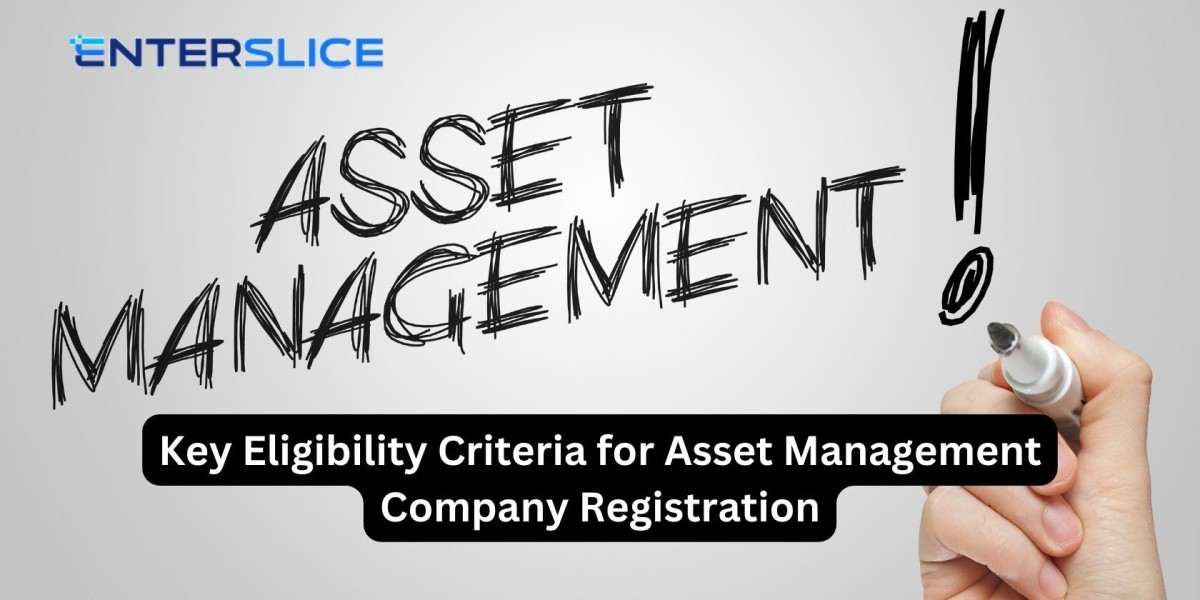The world of finance is evolving, and businesses looking to enter the investment management space through Asset Management Company Registration (AMC) are faced with various requirements and eligibility criteria. Asset management companies play a crucial role in managing investment funds, offering investors the ability to diversify their portfolios and potentially generate high returns. However, before you can start an AMC in India, it is important to understand the regulations and the requirements set by the Securities and Exchange Board of India (SEBI) to operate legally in the financial services industry.
In this blog, we will walk you through the key eligibility criteria for Asset Management Company Registration in India. By understanding these criteria, you can ensure that your AMC application process goes smoothly and that you meet all necessary conditions for approval.
What is an Asset Management Company (AMC)?
An Asset Management Company (AMC) is an entity that manages and oversees investments on behalf of investors, including high-net-worth individuals (HNIs), institutions, and mutual fund investors. AMCs manage a variety of funds, including mutual funds, hedge funds, and private equity funds. The goal of an AMC is to optimize investment returns for clients while managing risk according to the fund's strategy and objectives.
Eligibility Criteria for Asset Management Company Registration
The Asset Management Company Registration process in India is regulated by SEBI, which aims to ensure that AMCs operate in a transparent and responsible manner. Below are the essential eligibility criteria that must be met by businesses applying for AMC registration:
1. Legal Structure and Formation of the AMC
The first step in the registration process is ensuring that the company has the proper legal structure. As per SEBI regulations, an AMC must be a company incorporated under the Companies Act, 2013. This means that your business must be registered as a private limited company or a public limited company.
Additionally, the AMC must be managed by a qualified board of directors and a registered fund manager. If the AMC is structured as a trust, it must also comply with the necessary registration and operational requirements as specified by SEBI.
2. Minimum Net Worth Requirement
One of the most critical eligibility requirements for AMC registration is the minimum net worth that the company must maintain. SEBI mandates that an AMC must have a minimum net worth of INR 50 crore. This amount should be reflected in the paid-up capital, which is essential to ensure that the AMC is financially sound enough to operate and manage investments.
The net worth requirement ensures that AMCs have the financial stability to manage investor funds and absorb operational costs. The initial capital should be maintained throughout the operational life of the AMC. This requirement can vary for different types of AMCs, depending on the scale and size of the operations.
3. Experienced and Qualified Fund Manager
For any Asset Management Company, the experience and qualifications of the fund manager are crucial. The fund manager is responsible for making strategic investment decisions, managing risks, and ensuring that the fund’s goals are met. SEBI requires that the fund manager have substantial experience in investment management and a background in finance.
In addition to experience, fund managers must also hold the necessary qualifications, including but not limited to an MBA in Finance or certifications like the CFA (Chartered Financial Analyst) designation. SEBI also requires that the fund manager be part of the AMC’s team and meet certain conditions related to fit and proper criteria set by SEBI.
4. Appointment of Trustees and Custodians
SEBI also requires the appointment of trustees and custodians for an Asset Management Company. The trustee is responsible for safeguarding investors’ interests and ensuring that the fund operates in accordance with SEBI guidelines. The custodian is a separate entity that handles the safekeeping of the assets managed by the AMC.
The trustee must be a SEBI-registered entity, and the custodian must be registered with SEBI to handle the investments on behalf of the AMC. This structure ensures proper governance and investor protection.
5. Compliance with Investment Strategy
AMCs are expected to have a clear and well-documented investment strategy that aligns with SEBI’s guidelines. The AMC’s business plan must outline how it plans to manage funds, the types of assets it will invest in, and the risk profile it intends to maintain. SEBI also emphasizes that the AMC must be transparent in its operations and clearly communicate the investment philosophy to potential investors.
Additionally, the AMC must commit to following SEBI’s code of conduct and reporting obligations, which includes providing periodic updates on the performance of the funds under management.
6. Risk Management Framework
To ensure that investors’ funds are protected, AMCs are required to establish a robust risk management framework. This includes identifying, assessing, and managing risks related to market fluctuations, credit risk, liquidity risk, and operational risk. SEBI mandates that AMCs have an internal risk management system in place and regularly conduct stress tests to understand how their investments would perform under different market conditions.
A sound risk management framework helps protect the interests of investors and minimizes the potential for significant losses.
7. Registered Office in India
As part of the AMC registration process, the company must have a registered office in India. This ensures that the company has a physical presence in the country and complies with Indian laws and regulations. The office must also be equipped with the necessary infrastructure to handle the operations and provide services to investors.
8. Compliance with SEBI Regulations and Reporting
Once the Asset Management Company is established, it must comply with SEBI’s regulations on corporate governance, disclosure, and reporting. AMCs must submit annual reports, financial statements, and disclosures as required by SEBI to maintain transparency and ensure regulatory compliance.
The Application Process for AMC Registration
Once the eligibility criteria are met, the next step is to apply for AMC registration with SEBI. The application process typically involves the following steps:
- Submit an application to SEBI, along with all supporting documents.
- Pay the registration fee as prescribed by SEBI.
- SEBI will review the application and conduct due diligence to verify the details.
- Upon successful verification, SEBI will grant registration, allowing the AMC to commence operations.
Conclusion
Starting an Asset Management Company in India can be a lucrative venture, but it requires careful planning and compliance with SEBI’s regulations. By meeting the eligibility criteria outlined above—such as having a proper legal structure, maintaining sufficient net worth, appointing experienced fund managers, and establishing a risk management framework—you can ensure a smooth AMC registration process and begin offering investment management services.
Being proactive in meeting these requirements is key to ensuring that your AMC operates successfully, attracts investors, and stays compliant with regulatory standards.
FAQs
1. What is the minimum capital requirement for AMC registration in India?
The minimum net worth required for Asset Management Company Registration in India is INR 50 crore. This must be reflected in the paid-up capital to ensure that the AMC is financially stable enough to operate.
2. What qualifications do fund managers need for an AMC?
Fund managers for AMCs must have significant experience in the investment management industry and qualifications such as an MBA in Finance or certifications like CFA (Chartered Financial Analyst) to meet SEBI’s standards.
3. Do I need to appoint a custodian for my AMC?
Yes, SEBI requires that an AMC appoint a custodian who is registered with SEBI. The custodian will be responsible for safeguarding the assets managed by the AMC.
Also, read:
Collective Investment Scheme Registration – An Overview







